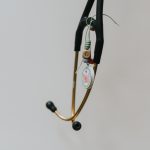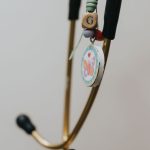Share
An update on medical marijuana/cannabinoid prescribing in cancer patients
By Dr. Malcolm Brigden, MD
Other than immuno-oncology agents, few recent topics have attracted more attention or generated more questions from cancer patients than medical marijuana. While a great deal is known in relation to the various medicinal cannabinoids, specifically in relation to oncology, there continues to be large gaps relating to basic pharmacology and potential drug interactions. The situation is further complicated by the lack of randomized controlled clinical trials and the huge variety of cannabinoid preparations and formulations currently available, each with variability, biochemical complexity and quality control issues. This lack of high-level scientific evidence, coupled with deficiencies in pertinent physician education and complex federal and provincial regulations, leave many clinicians in the dark about how to advise individual cancer patients.
From an oncology perspective, the most clinically relevant compounds include the cannabinoid agents, Delta-9-tetrahydrocannabinol (THC), cannabidol (CBD) and the non-cannabinoid terphenoids and flavonoids. THC is the primary psychoactive component of cannabis, while CBD is non-intoxicating and without psychotropic properties, representing a pharmacological analgesic with neuroprotective, sedative, antipsychotic, antiemetic, antispasmodic, anti-inflammatory and immunoregulatory properties. In fact, CBD seems to attenuate several adverse THC effects, including tachycardia, psychotic symptoms and strong psychological reactions, including anxiety.
In terms of positive effects noted in cancer patients, relief of refractory chemotherapy emesis or pain, stimulation of appetite and help with sleep and relaxation have been most commonly described. When used with the proper preparation and in the right THC/CBD ratio dosing, there seems to be a consensus that medical cannabinoids have a tolerable side effect profile, sometimes gentler than that associated with their conventional therapy counterparts. Particularly appealing is the concept of being able to use a single medication for a variety of problems that frequently co-exist in malignancy, such as pain, anxiety, sleep disorders and anorexia. Absolute contraindications to cannabinoid therapy in cancer patients appear to be few, but might include psychosis, bipolar disorder, significant cardiac disorder, lactation and pregnancy, prior history of significant substance abuse and documented cannabis allergies. Driving is generally not recommended for four hours after inhaled medical marijuana, six hours after oral, or eight hours if any “high” or euphoria has been experienced.
Recent studies yield interesting results
A 2004 Spanish study of over 2,000 patients, 50% of whom had cancer, allowed the profiling of typical cannabinoid use in malignancy, including an estimate of anticipated benefits and side effects. The usual patient was age 45, using cannabinoids for less than one year. Consumption was mainly smoked (70%) but also ingested (23%) or infused (16%). Beneficial effects were noted in over 50% of patients, including hypnotic effect (56%), nausea improvement (47%), improved pain relief and improved appetite (both 46%). The most commonly reported adverse effects included dry mouth, emotional ability, memory impairment and ocular irritation. In an Israeli study involving almost 1,700 cancer patients using opioids, following the introduction of cannabinoids approximately 50% of patients continued to take the same dose, 10% decreased dosing, but 36% were able to cease taking opioids completely
Considering all sides
There are a variety of medical, legal and individual provincial medical College concerns for the physicians contemplating the prescription of cannabinoids (see table1). In fact, following the legalization of marijuana in Canada, one faction of the Canadian Medical Association wants to wash their hands completely of the medical cannabis program, arguing that there is no longer any need for a medical/physician gatekeeper role. This faction also believes that the lack of credible scientific evidence puts the average prescribing physician in a very tenuous and awkward position. The opposing faction argues that medical cannabinoids still represent potent pharmaceutical substances that merit professional medical input and regulation, like any other prescription medication.
The Canadian Medical Protective Association (CMPA), which provides medical legal protection for the majority of Canadian physicians, produced a duties and responsibilities document in August 2016. This document stressed the absence of scientific evidence on the benefits of cannabinoids, as well as the challenge of dealing with patient requests for access to medical marijuana. It essentially reinforced the Access to Cannabis for Medical Purposes Regulations (ACMPR), which requires every licensed healthcare practitioner to provide a “medical document” that includes the daily quantity of dried marijuana (expressed in grams) authorized for the patient. In Canada, the actual commercial suppliers or producers of medical marijuana are licensed and must meet strict quality control, safely and security requirements. This licensed producer will be the one to determine the equivalent quantities of fresh marijuana or cannabis oil in relation to the dried marijuana prescribed. With the “medical document” in place, patients may also register with health Canada to self-produce a limited amount of marijuana for medicinal purposes, or designate a producer for them.
The CMPA bulletin also emphasized the need for individual physician prescribers to be knowledgeable and abide by their individual provincial colleges’ regulations relating to cannabinoids. It emphasized that prescribing physicians must have the necessary clinical knowledge to engage in meaningful discussions about medical marijuana and that consent must be documented in the patient’s medical records. As a corollary, physicians who are unfamiliar or uncomfortable with medical cannabinoids should not in any way feel obligated to prescribe .With each prescription, medical cannabis patients must be informed about potential adverse effects such as acute impairment of memory, coordination and judgement, as well as possible chronic effects such as cannabis abuse disorder, cognitive impairment, chronic bronchitis and the possibility of increased risk for motor vehicle accidents. Appropriate selection criteria includes age, severity and nature of the medical disorder, prior or current serious psychiatric or substance abuse disorder, prior failure of standard medical therapy, lack of serious underlying cardiopulmonary disease or mental illness and an agreement to follow-up visits.
In summary, while there is some evidence to suggest cannabis is a reasonable option for oncology patients, this does not mean we have sufficient evidence to support its uses in other medical conditions. But currently, it appears that we can currently be confident that medical cannabinoids have some utility in symptom management for patients living with and beyond cancer. Compared with most therapeutic agents that oncologists use, the side effect profile of medical cannabinoids appears acceptable and most adverse effects are well identified. To be able to suggest a single agent to manage a multiplicity of symptoms simultaneously, including nausea, anorexia, pain, insomnia as well as anxiety, would seem to be advantageous. Medical marijuana will likely continue to represent a significant clinical conundrum for the individual prescribing physicians and the medical community at large.
Dr. Brigden is a medical oncologist, currently based primarily at the Jack Ady Cancer Clinic in Lethbridge, Alberta.
Table 1:
| Potential Areas of Concern Relating to Medical Marijuana/Cannabinoid Prescription |
Adapted with permission from Oncology Exchange 2018; 17: No 3, page 15 |
Additional possible reading:
- Brigden M, England D. Medical Marijuana and Community Oncology Practice: The Good, the Bad, and the Potentially Ugly. Oncology Exchange 2018; 17: No 3, 10-16.
- MacCallum CA, Russo EB. Practical considerations in medical cannabis administration and dosing. Eur J Intern Med. 2018 Mar; 49: 12-19.
- Sagy I, Peleg-Sagy T, Barski L, Zeller L, Jotkowitz A. Ethical issues in medical cannabis use.Eur J Intern Med. 2018 Mar; 49: 20-22.
- Canadian Medical Protective Association (CMPA). Medical marijuana: considerations for Canadian doctors [Internet]. Ottawa: Canadian Medical Protective Association May (revised 2016 Aug). Available from: https://www.cmpa-acpm.ca/en/advice-publications/browse-articles/2014/medical-marijuana-new-regulations-new-college-guidance-for-canadian-doctors
- Allan GM, Ramji J, Perry D, Ton J, Beahm NP, Crisp N. Simplified guideline for prescribing medical cannabinoids in primary care. Can Fam Physician. 2018 Feb; 64(2): 111-120.
Related News
All News & EventsAugust 8, 2024
Review the principles of safe opioid prescribing and earn CPD credits
August 8, 2024
Physicians’ notes: The consequences of substandard communication for yourself, your colleagues and your patients
July 11, 2024
Should we add a risk model score to MD Snapshot-Prescribing?
July 11, 2024




















Comments for this post are now closed. If you would like to share your feedback on this topic, please email support@cpsa.ca.